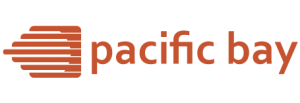From Desktop Valuations to Open Banking: The Next Wave of Fast Bridging Loans in the UK
Speed has defined bridging finance since its earliest days, yet the definition of “fast” continues to shrink. Five years ago, a seven‑day completion impressed brokers. Today, many lenders aim for forty‑eight hours, and a handful have broken the twenty‑four‑hour barrier on straightforward cases. Behind the acceleration stands a stack of digital tools, regulatory adjustments, and investor appetite for short‑duration debt. This article looks ahead, charting the technological and market developments set to shape fast bridging loans across Britain through 2026 and beyond.
Digital Underwriting Powered by Real‑Time Data
Open banking arrived under the revised Payment Services Directive, but only recently have bridging lenders tapped its full potential. Instant access to verified income and spending records allows underwriters to check fraud flags, monitor recurring commitments, and confirm deposit sources within minutes. Machine‑learning models score applications based on thousands of historic deals, flagging edge cases for manual review while green‑lighting low‑risk borrowers automatically. The result: an initial decision inside one hour and full credit approval the same afternoon.
Lenders now combine open banking with Companies House API feeds, bouncing director history and insolvency markers against internal risk matrices. Paired with electronic identity verification, the stack removes almost every paper document from the process, satisfying both speed and compliance.
Instant Valuation Through Geospatial Analytics
Automated valuation models (AVMs) once struggled with period terraces, mixed‑use units, or rural cottages. Advances in geospatial analytics—satellite imagery, LiDAR mapping of elevation, and granular transaction data—now deliver credible figures across most postcodes. Some lenders tier pricing to AVM confidence scores; the higher the confidence, the lower the interest rate. Borrowers benefit from both faster approval and potential cost savings when their property sits within a data‑rich area.
For more complex assets, drones equipped with photogrammetry capture roof condition and façade integrity in a single fly‑over, uploading images directly to a chartered surveyor’s portal. The surveyor produces a desktop report in under two hours, sidestepping scheduling delays and travel time.
Blockchain‑Based Title Records on the Horizon
His Majesty’s Land Registry has piloted a blockchain proof‑of‑concept that could see property titles represented on a distributed ledger. If the initiative scales, bridging lenders could check charges, restrictions, and ownership in seconds, with cryptographic certainty. Lawyers would still play a role, yet their focus would shift from data retrieval to risk advice, trimming days from the current conveyancing timeline.
Industry observers believe a hybrid model—where the blockchain mirrors the official register until legislation catches up—could become standard by late 2026. Bridging lenders are likely early adopters, given their dependency on rapid confirmation of clean title.
Green Finance and the Rise of Energy‑Efficient Refurb Loans
The United Kingdom aims to lift the minimum Energy Performance Certificate (EPC) rating for rental properties to C. Investors racing to upgrade stock need quick funding for insulation, heat‑pump installation, and window replacement ahead of the cutoff. Several specialist lenders already offer discounted fast bridges for properties that will jump at least two EPC bands upon completion of works. Interest rebates apply once a post‑works certificate is uploaded, rewarding borrowers who improve housing stock.
The bond market’s hunger for environmental, social, and governance assets filters through to wholesale funding lines, allowing lenders to price green bridges below traditional rates without sacrificing margin.
Tokenisation and Fractional Funding
Crowdfunding platforms have begun raising institutional ticket sizes by issuing asset‑backed tokens tied to individual loans. Smart contracts handle interest distribution, allowing retail and professional investors to take fractional exposure down to £100. Bridging lenders gain a varied funding source and can underwrite more volume without relying solely on bank credit lines. Borrowers indirectly benefit through deeper liquidity and sharp pricing.
Regulators monitor tokenisation closely, yet early feedback from the FCA’s sandbox suggests controlled growth will be allowed under expanded e‑money and security token frameworks. Should that trend hold, the bridging market may witness intraday funding rounds, pushing completion times even lower.
Case Study: Same‑Day Funding in Bristol
In March 2025, a Bristol‑based developer spotted a vacant shop with planning consent for conversion to two flats. The property went under offer at 9 a.m. A fast bridging lender using open banking and an AVM approved the £300,000 quick briging loan by noon, commissioned a drone survey at 1 p.m., and released funds into the solicitor’s account at 5 p.m. The buyer completed the next morning, beating a rival bidder still arranging a commercial mortgage. According to the developer, digital processes cut at least seven days from the timeline, saving £1,200 in hold‑over rent on temporary premises and securing a £10,000 price discount promised for a next‑day exchange.
Challenges to Manage
Faster does not automatically mean safer. Algorithmic bias in credit scoring could exclude groups with thin credit files. Over‑reliance on AVMs may miss structural faults hidden behind fresh paint. To maintain trust, lenders need sound oversight committees, back‑testing of models, and the option for manual valuation at the borrower’s request. Brokers, in turn, must educate clients on both opportunities and limits of new technology.
Cyber‑security also looms large. Bridging lenders store sensitive identity data and property details. The push for rapid processing demands strong encryption, multi‑factor authentication, and constant penetration testing. A single breach would erode confidence just as quickly as a missed completion deadline.
Outlook
Speed will remain the rallying cry of bridging finance, yet the meaning of speed is changing. It no longer rests solely on how fast a solicitor can post documents or how quickly a surveyor can reach a site. Instead, it draws on API calls, drone footage, and possibly blockchain hashes, all stitched together by underwriting engines that never sleep. As technology matures, borrowers should see lower fees, greener funding options, and completion targets measured in hours, not days.
However, vigilance must match velocity. Borrowers, brokers, and regulators share an interest in balancing innovation with sound risk management. If they succeed, the next wave of fast bridging loans will not only win the race against time but also raise the standard of service across the wider United Kingdom mortgage market.




 The best way to make sure that you have sufficient funds to pay back debt or
The best way to make sure that you have sufficient funds to pay back debt or 




